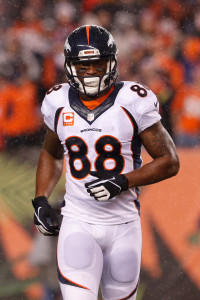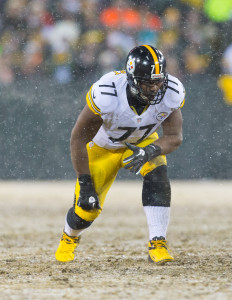Since the NFL’s latest Collective Bargaining Agreement has made rookie contracts fairly regimented, negotiations between teams and draft picks have become smoother than ever, with few – if any – players expected to be unsigned by the time training camp gets underway. At the moment, only six players have yet to ink their rookie deals, including three first-round picks: Justin Gilbert (Browns), Taylor Lewan (Titans), and Dominique Easley (Patriots).
Although we don’t know for sure what the holdup is with those three players, one factor that continues to play a role in contracts for first-round picks relates to offset language. Over the last several years, only a handful of players in each year have managed to avoid having offsets language written into their deals. In most cases, a lack of offsets for a player simply relies on which team drafted him — clubs like the Rams and Jaguars traditionally haven’t pushed to include offsets in contracts for their top picks, even in an era where most other teams around the league do.
Offset language relates to what happens to a player’s salary if he’s cut during the first four years of his career, while he’s still playing on his rookie contract. For the top 15 to 20 picks in the draft, those four-year salaries will be fully guaranteed, even if a player is waived at some point during those four seasons. For example, if a player has $4MM in guaranteed money remaining on his contract and is cut, he’ll still be owed that $4MM.
However, if a team has written offset language into the contract, that club can save some money if and when the player signs with a new team. For example, if that player who had $4MM in guaranteed money left on his contract signs with a new club on a $1MM deal, his old team would only be on the hook for $3MM, with the new team making up the difference. If there’s no offset language on that first deal, the old team would continue to be on the hook for the full $4MM, and the player would simply earn an additional $1MM from his new club.
Although the negotiation of offset language might potentially delay a rookie’s signing, the offsets rarely come into play, since few top picks flame out badly enough that they’re released during their first four seasons. And even in those rare instances, if a player has performed poorly enough to be cut in his first few years, he likely won’t sign a lucrative deal elsewhere, so offset language wouldn’t help his old club recover more than perhaps the league minimum.
As noted above, the Rams and Jaguars are among the teams who aren’t averse to forgoing offsets in their agreements with top picks, so Greg Robinson, Blake Bortles, and Aaron Donald don’t have offset language in their first NFL contracts.
Note: This is a PFR Glossary entry. Our glossary posts will explain specific rules relating to free agency, trades, or other aspects of the NFL’s Collective Bargaining Agreement. Information from OverTheCap.com was used in the creation of this post.


 uchdowns over his first two seasons; he nearly matched those numbers in 2013, however, despite starting only eight games due to a fractured foot. Advanced metrics paint a more favorable picture of Rudolph, as he graded as a top-15 tight end in both
uchdowns over his first two seasons; he nearly matched those numbers in 2013, however, despite starting only eight games due to a fractured foot. Advanced metrics paint a more favorable picture of Rudolph, as he graded as a top-15 tight end in both 